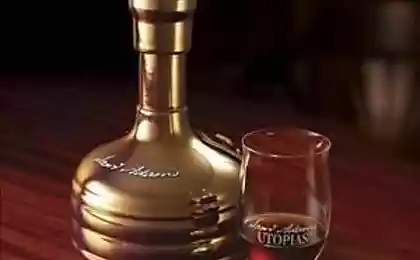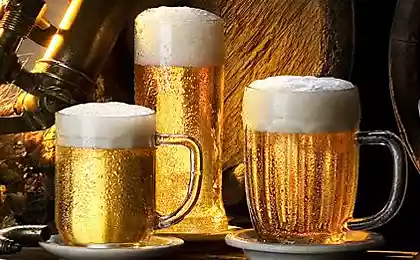1205
The history of the Soviet beer (7 photos)
1920
The official date of birth of the Soviet (although, more accurately, more beer RSFSR - the USSR was established later) brewing can be considered the date of February 3, 1922, when it signed a decree "On excise duty on beer, honey, kvass and fruit and artificial mineral waters." This time coincided with the deployment of the NEP, when he was given some freedom of private enterprise, reflected in the fact that apart from the nationalized breweries there were many leased - usually former owners and brewers.
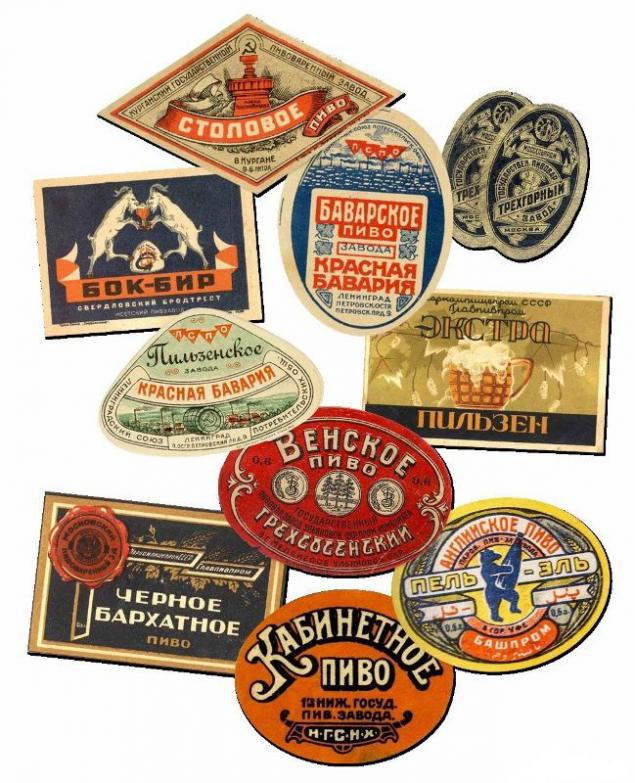
What kind of beer brewed at the time? The same grade as before the revolution. This pro-German brand "Bavarian" dark "Munich", "Kulmbahskoe", "Export" strong "Side"; Austrian and Czech brand (Czech Republic before World War I was part of the Austro-Hungarian Empire), "Vienna", "Bohemian" classic "Pils" and more dense, "export" version ("Extra Pilsen"). In the tradition of the British brewing stout porter brewed dark and bright Pale-ale. Very popular were (likely because of its low density, and hence cost-effective) "Household" dark "The March", survived and some independent Russian brands, although they appeared under the influence of Western European brewing: "cabinet", " Double golden label. " The only native Russian beer - a "Black" and his version of "Black Velvet". This beer does not ferment completely, as well as traditional Russian kvass. It had a high density of very low strength and little was known in Europe.
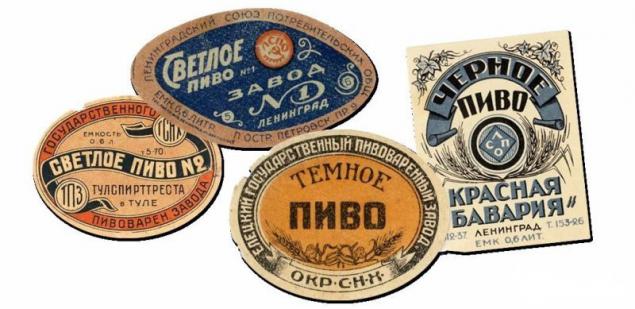
By the end of the 1920 New Economic Policy began to fold, squeeze out private traders from the brewing industry, was first introduced OCT beer (OST 61-27), which was mandatory only for large public works (it does not prohibit cooking and other varieties). On this OST it was proposed to produce four beers "Lager number 1" - close to the pilsener style "Light number 2" - close to Vienna, "dark" - close to Munich and the "Black" - traditionally Russian, fermented riding yeast and had Fortress 1% alcohol, like kvass.
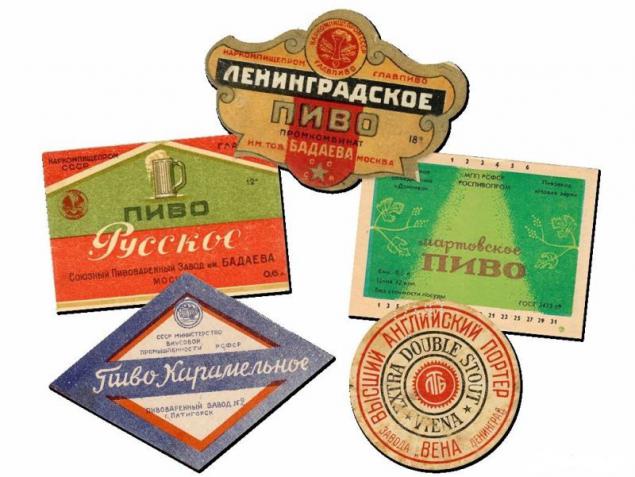
1930
By the mid-1930s were actively working on new OSTami, diversity of varieties like to expand, and in the direction of traditional Western brands ("Vienna", "Pils", "Munich"). At that time, mainly in the definition of the style of beer has been malt - for "Pils" beer using a light "pilsener" malt for "Vienna" - a fried, and therefore darker "Vienna" to "Munich" - a dark "Munich" malt. We consider and water - for a "Pils" it had to be very soft, for "Munich" - tougher. But as a result of the GRL it was made beer under other names that are usually associated with the famous legend - the victory of beer "Vienna" Zhigulevsk plant on competition of beer at ENEA and offer Mikoyan instead of "bourgeois" name "Vienna" to use the name of the plant - "Zhiguli" . Whatever it was, but was renamed and malt and beer.
Malt began to divide by color into three types: the "Russian" (formerly "Pilsener"), "Zhiguli" (former "Vienna"), Ukrainian (formerly "Munich"), respectively, was renamed and beer - in the "Russian", "Zhiguli "," Ukrainian ". The names were given in honor of the largest state-owned factories, "Zhiguli" - Zhigulevsky factory in Kuibyshev (Samara), "Russian" - the factory of Rostov-on-Don, "Moscow" - Moscow enterprises, "Ukrainian" - plants Odessa and Kharkov. 350-38 in the East have been made, and other varieties under its old name (since nothing "bourgeois" in their title was not): it "Porter", which is fermented by the English tradition of top fermentation, very tight, silnoohmelёnny beer with wine, and caramel flavor. And besides him, "The March" and "Caramel" (successor of "Black") - is dark, not attenuated beer, which had 1, 5% alcohol, which is recommended to use even for children and nursing mothers. These eight grades, with some modifications, and lasted until the collapse of the Soviet Union, and some of it and survived, so focus on them in detail.
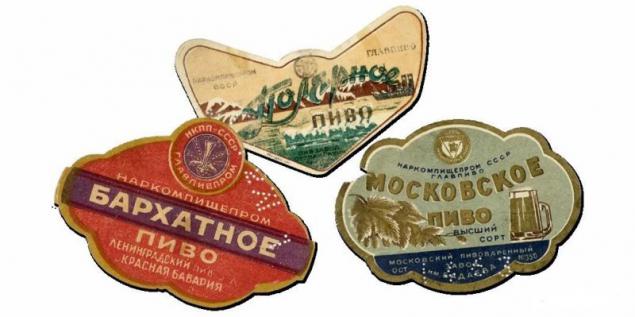
Furthermore, were the development of new varieties, especially the elite. So, by 1939, it was designed "from the Moscow Higher grade" and "Capital". This light was the sort of strong (and after the war, when the density was increased to 23%, and most dense) grade in the USSR. "Kiev" - beer with wheat malt, although grassroots (camp) fermentation. Cooked "Union" and "Polar", which duplicate each variety, "Moscow", so it was discontinued. It develops and sort of in the style of ale, but the beginning of the Great Patriotic War stopped all work in this direction.

The postwar period
Already in 1944, after the liberation of Riga, was put into production grade "Riga", which is dubbed the "Russian" GOST 3478-46 and has replaced this variety (now Riga was not a "bourgeois" city name "Riga" can be used ). The remaining grades in GOST preserved. Since that time, with very few exceptions, all beer produced in the USSR by bottom fermentation technology (the camp), and mashed wort in the Czech-German traditions decoction method. The reconstruction of the war-ravaged economy. During 1930, beer production increased in the Soviet Union three times, but in 1946 it was less than half of the production of 1940. The lion's share of beer sold on tap (as well as before the war, although the Russian Empire it was the other way around), let a little bottle, and was in the lead in this matter Baltics. The bulk of beer accounted for the sort of "Zhiguli", in some cases it took up to 90% of the total volume of beer produced.
Serious changes have occurred only during the Khrushchev thaw. While the country was carried out various administrative and economic subordination, and instead guests on beer entered the republican standard, which greatly increased the number of varieties of the Soviet beer. Many large factories introduced their own TSS (time specifications), and began to brew specialty varieties. The quantitative variety of far exceeded one hundred varieties. In addition to the Russian Federation, especially the many varieties was in the Ukrainian SSR, the Byelorussian SSR, the Baltic countries - usually they were called republics, historical areas, capitals and cities with brewing traditions. At the same time in the brewing became very widely implement nesolozhёnye materials. This allows creating different taste profiles - barley, rice, maize, soybeans, wheat, and various types of sugar - which are an integral part of the formulation Soviet beer. In the late 1950s - early 1960s were discovered factories for the production of enzyme preparations in Zaporizhia and Lviv, which increased the number of employed nesolozhёnyh products to 30-50% (primarily in "Zhiguliovsk»).
Here are some of the most interesting varieties that have begun to produce at the time: "Taiga" and "Magadan" was conducted using an extract of pine needles, and Estonian "Kadaka" - a juniper, "Pereyaslavskoe" and "Romny holiday" - honey and "Amateur "- 50% nesolozhёnoy wheat. Some plants were real generators of new varieties. Under the leadership of GP Dyumlera on Iset factory was established "Isetskoe" beer, which served as the prototype of the German side (this sort of boiled and still do). Also, there are "Ural" - dense, dark beer and wine and "Sverdlovsk" - silnovybrozhenny light beer, the forerunner of the varieties that we now drink.
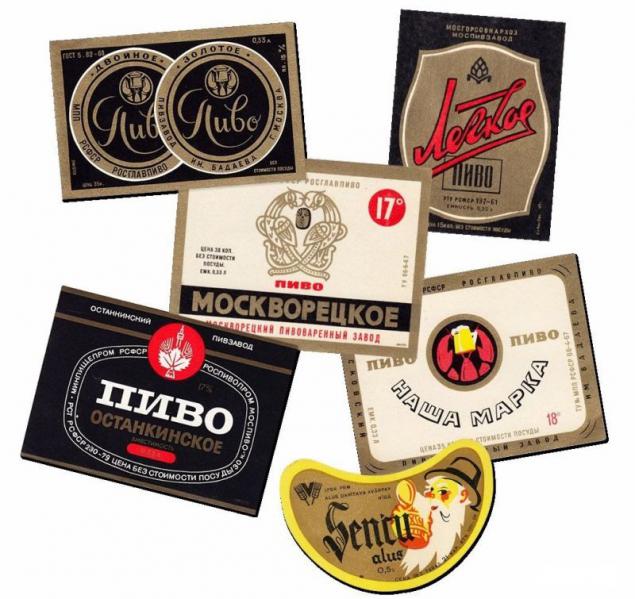
Beer in the Soviet Union tried to ferment completely, but the technology of the time (primarily used to race the yeast) were not allowed to do so with the same initial density varieties Soviet beer has always been less strong than modern - and this at a very considerable period of time dobrazhivaya Soviet beer up to 100 days, as in "Capital". In Moscow revived the pre-revolutionary "Dual gold label" called "double gold", and later began to brew a thick, pale "Our Brand" and "Moskva", a dense dark "Ostankino". In Khamovniki cooked "Easy" beer in the traditional Russian style attenuated kvass.
In Ukraine, Lvov factory stood (with multiple versions of "Lviv"), the Kiev factory (several versions of the "Kiev") and others. Baltic States remained the last island chistosolodovogo beer brewed it there for a few grades (eg grade of "Sencha" repeats the formulation "Zhiguli", but only the pure malt). Across the Union, the only mass chistosolodovym grade was "Riga". But to replace him closer to 1970, we began to implement "Slavic". Since mid-1960 bottled beer has already begun to prevail over the dispensing, it is usually not pasteurized, and the resistance was around seven days. But in fact, resistance was less than three days, because the brewery could afford it - on the shelves of beer is not zalёzhivalos. Because the last guest malt disappeared "Zhiguli" ("Vienna"), malt, and "Zhiguli" has lost its "Viennese" in nature, but because of the significant amount of nesolozhёnyh products and reducing the time fermentation up to 14 and even up to 11 days sort of turned into the most unassuming.
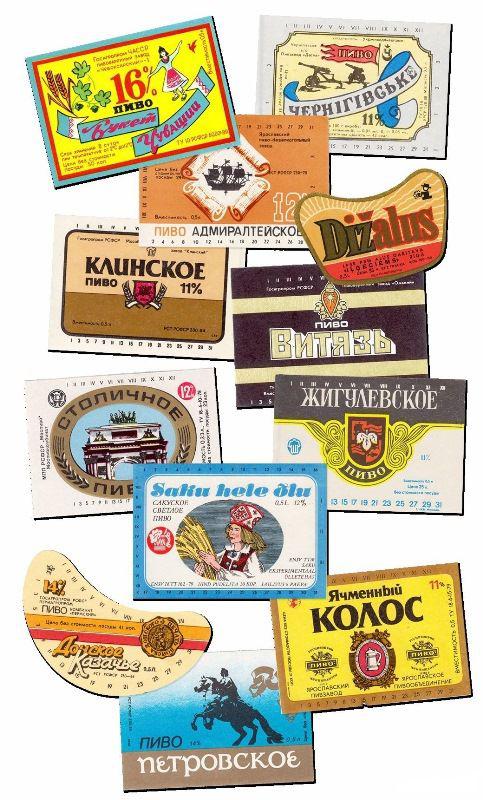
1970-1990-ies
In the 1970s, have been launched such famous brands as "Admiralty", "Don Cossack", "Peter the Great", "Barley ear", "Klinskoe", many of them have survived to the present day. Grades "Amateur" and "Capital" continues the trend of movement to the modern varieties silnovybrozhennym. In the 1980s, new varieties continue to appear constantly (oddly enough, but the anti-alcohol company in 1985 even stimulated their appearance, especially alcoholic), only a lot of them become by 1990, although many of these varieties can already be attributed to the period of independence of the republics of the former USSR . While any "Tver", "Buket of Chuvashia", "Hero", "Chernihiv", but this need is another conversation. Overall, during the existence of the USSR (from 1922 to 1991) was brewed about 350 beers.
The official date of birth of the Soviet (although, more accurately, more beer RSFSR - the USSR was established later) brewing can be considered the date of February 3, 1922, when it signed a decree "On excise duty on beer, honey, kvass and fruit and artificial mineral waters." This time coincided with the deployment of the NEP, when he was given some freedom of private enterprise, reflected in the fact that apart from the nationalized breweries there were many leased - usually former owners and brewers.

What kind of beer brewed at the time? The same grade as before the revolution. This pro-German brand "Bavarian" dark "Munich", "Kulmbahskoe", "Export" strong "Side"; Austrian and Czech brand (Czech Republic before World War I was part of the Austro-Hungarian Empire), "Vienna", "Bohemian" classic "Pils" and more dense, "export" version ("Extra Pilsen"). In the tradition of the British brewing stout porter brewed dark and bright Pale-ale. Very popular were (likely because of its low density, and hence cost-effective) "Household" dark "The March", survived and some independent Russian brands, although they appeared under the influence of Western European brewing: "cabinet", " Double golden label. " The only native Russian beer - a "Black" and his version of "Black Velvet". This beer does not ferment completely, as well as traditional Russian kvass. It had a high density of very low strength and little was known in Europe.

By the end of the 1920 New Economic Policy began to fold, squeeze out private traders from the brewing industry, was first introduced OCT beer (OST 61-27), which was mandatory only for large public works (it does not prohibit cooking and other varieties). On this OST it was proposed to produce four beers "Lager number 1" - close to the pilsener style "Light number 2" - close to Vienna, "dark" - close to Munich and the "Black" - traditionally Russian, fermented riding yeast and had Fortress 1% alcohol, like kvass.

1930
By the mid-1930s were actively working on new OSTami, diversity of varieties like to expand, and in the direction of traditional Western brands ("Vienna", "Pils", "Munich"). At that time, mainly in the definition of the style of beer has been malt - for "Pils" beer using a light "pilsener" malt for "Vienna" - a fried, and therefore darker "Vienna" to "Munich" - a dark "Munich" malt. We consider and water - for a "Pils" it had to be very soft, for "Munich" - tougher. But as a result of the GRL it was made beer under other names that are usually associated with the famous legend - the victory of beer "Vienna" Zhigulevsk plant on competition of beer at ENEA and offer Mikoyan instead of "bourgeois" name "Vienna" to use the name of the plant - "Zhiguli" . Whatever it was, but was renamed and malt and beer.
Malt began to divide by color into three types: the "Russian" (formerly "Pilsener"), "Zhiguli" (former "Vienna"), Ukrainian (formerly "Munich"), respectively, was renamed and beer - in the "Russian", "Zhiguli "," Ukrainian ". The names were given in honor of the largest state-owned factories, "Zhiguli" - Zhigulevsky factory in Kuibyshev (Samara), "Russian" - the factory of Rostov-on-Don, "Moscow" - Moscow enterprises, "Ukrainian" - plants Odessa and Kharkov. 350-38 in the East have been made, and other varieties under its old name (since nothing "bourgeois" in their title was not): it "Porter", which is fermented by the English tradition of top fermentation, very tight, silnoohmelёnny beer with wine, and caramel flavor. And besides him, "The March" and "Caramel" (successor of "Black") - is dark, not attenuated beer, which had 1, 5% alcohol, which is recommended to use even for children and nursing mothers. These eight grades, with some modifications, and lasted until the collapse of the Soviet Union, and some of it and survived, so focus on them in detail.

Furthermore, were the development of new varieties, especially the elite. So, by 1939, it was designed "from the Moscow Higher grade" and "Capital". This light was the sort of strong (and after the war, when the density was increased to 23%, and most dense) grade in the USSR. "Kiev" - beer with wheat malt, although grassroots (camp) fermentation. Cooked "Union" and "Polar", which duplicate each variety, "Moscow", so it was discontinued. It develops and sort of in the style of ale, but the beginning of the Great Patriotic War stopped all work in this direction.

The postwar period
Already in 1944, after the liberation of Riga, was put into production grade "Riga", which is dubbed the "Russian" GOST 3478-46 and has replaced this variety (now Riga was not a "bourgeois" city name "Riga" can be used ). The remaining grades in GOST preserved. Since that time, with very few exceptions, all beer produced in the USSR by bottom fermentation technology (the camp), and mashed wort in the Czech-German traditions decoction method. The reconstruction of the war-ravaged economy. During 1930, beer production increased in the Soviet Union three times, but in 1946 it was less than half of the production of 1940. The lion's share of beer sold on tap (as well as before the war, although the Russian Empire it was the other way around), let a little bottle, and was in the lead in this matter Baltics. The bulk of beer accounted for the sort of "Zhiguli", in some cases it took up to 90% of the total volume of beer produced.
Serious changes have occurred only during the Khrushchev thaw. While the country was carried out various administrative and economic subordination, and instead guests on beer entered the republican standard, which greatly increased the number of varieties of the Soviet beer. Many large factories introduced their own TSS (time specifications), and began to brew specialty varieties. The quantitative variety of far exceeded one hundred varieties. In addition to the Russian Federation, especially the many varieties was in the Ukrainian SSR, the Byelorussian SSR, the Baltic countries - usually they were called republics, historical areas, capitals and cities with brewing traditions. At the same time in the brewing became very widely implement nesolozhёnye materials. This allows creating different taste profiles - barley, rice, maize, soybeans, wheat, and various types of sugar - which are an integral part of the formulation Soviet beer. In the late 1950s - early 1960s were discovered factories for the production of enzyme preparations in Zaporizhia and Lviv, which increased the number of employed nesolozhёnyh products to 30-50% (primarily in "Zhiguliovsk»).
Here are some of the most interesting varieties that have begun to produce at the time: "Taiga" and "Magadan" was conducted using an extract of pine needles, and Estonian "Kadaka" - a juniper, "Pereyaslavskoe" and "Romny holiday" - honey and "Amateur "- 50% nesolozhёnoy wheat. Some plants were real generators of new varieties. Under the leadership of GP Dyumlera on Iset factory was established "Isetskoe" beer, which served as the prototype of the German side (this sort of boiled and still do). Also, there are "Ural" - dense, dark beer and wine and "Sverdlovsk" - silnovybrozhenny light beer, the forerunner of the varieties that we now drink.

Beer in the Soviet Union tried to ferment completely, but the technology of the time (primarily used to race the yeast) were not allowed to do so with the same initial density varieties Soviet beer has always been less strong than modern - and this at a very considerable period of time dobrazhivaya Soviet beer up to 100 days, as in "Capital". In Moscow revived the pre-revolutionary "Dual gold label" called "double gold", and later began to brew a thick, pale "Our Brand" and "Moskva", a dense dark "Ostankino". In Khamovniki cooked "Easy" beer in the traditional Russian style attenuated kvass.
In Ukraine, Lvov factory stood (with multiple versions of "Lviv"), the Kiev factory (several versions of the "Kiev") and others. Baltic States remained the last island chistosolodovogo beer brewed it there for a few grades (eg grade of "Sencha" repeats the formulation "Zhiguli", but only the pure malt). Across the Union, the only mass chistosolodovym grade was "Riga". But to replace him closer to 1970, we began to implement "Slavic". Since mid-1960 bottled beer has already begun to prevail over the dispensing, it is usually not pasteurized, and the resistance was around seven days. But in fact, resistance was less than three days, because the brewery could afford it - on the shelves of beer is not zalёzhivalos. Because the last guest malt disappeared "Zhiguli" ("Vienna"), malt, and "Zhiguli" has lost its "Viennese" in nature, but because of the significant amount of nesolozhёnyh products and reducing the time fermentation up to 14 and even up to 11 days sort of turned into the most unassuming.

1970-1990-ies
In the 1970s, have been launched such famous brands as "Admiralty", "Don Cossack", "Peter the Great", "Barley ear", "Klinskoe", many of them have survived to the present day. Grades "Amateur" and "Capital" continues the trend of movement to the modern varieties silnovybrozhennym. In the 1980s, new varieties continue to appear constantly (oddly enough, but the anti-alcohol company in 1985 even stimulated their appearance, especially alcoholic), only a lot of them become by 1990, although many of these varieties can already be attributed to the period of independence of the republics of the former USSR . While any "Tver", "Buket of Chuvashia", "Hero", "Chernihiv", but this need is another conversation. Overall, during the existence of the USSR (from 1922 to 1991) was brewed about 350 beers.


